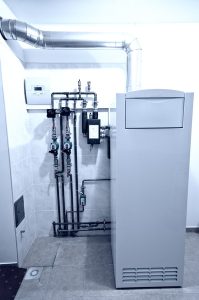Step-by-Step Guide to Your Dream Bathroom Renovation
Renovating your bathroom is an exciting project that can breathe new life into one of the most important rooms in your home. Whether your goal is to update outdated fixtures, increase functionality, or create a luxurious retreat, a well-planned bathroom renovation can have a big impact on your daily life.
Starting with a clear plan is essential. Without a roadmap, you might end up overspending or making design choices that you later regret. By setting a realistic budget and designing a thoughtful layout, you can ensure that your renovation journey is smooth and enjoyable. It’s not just about picking pretty tiles or a fancy faucet; it’s about creating a space that works for you and your family.
Choosing the right fixtures and materials is the next big step. With so many options available, it can be overwhelming. Prioritizing quality and durability will save you money and stress in the long run. Additionally, deciding which tasks you can handle yourself and which require professional help will make the process more manageable and less daunting.
In this guide, we’ll walk you through each step of your bathroom renovation, from planning to choosing materials to understanding plumbing considerations. Whether you’re doing a full makeover or a simple update, this comprehensive guide will help you achieve your dream bathroom while avoiding common pitfalls.
Planning Your Bathroom Renovation
Setting a Budget
The first step in planning your bathroom renovation is setting a budget. Knowing how much you can afford helps you make smart choices about materials, fixtures, and professional services. To set a budget, start by listing all the potential expenses. This includes the cost of fixtures, materials, labour, permits, and any unexpected costs that might come up. It’s a good idea to set aside an extra 10-15% of your budget for these unforeseen expenses.
By prioritizing what matters most to you, it becomes easier to allocate your funds. For example, if a luxurious shower is your top priority, you might decide to spend more there and save on other items like vanity lighting or tile. Remember, quality over aesthetics: while it’s tempting to splurge on the prettiest tiles, durable materials will save you more in the long run.
Designing Your Layout
Designing the layout of your bathroom is crucial for both function and style. Think about how you use your current bathroom and what changes could improve it. Start by sketching your existing layout, noting where the plumbing is. This will help you understand what you can keep versus what needs to be moved, which can be costly.
When designing your layout, consider the flow of the space. Ensure there’s enough room to move around comfortably. Place the essential fixtures – like the toilet, sink, and shower – in spots that make sense for daily use. Think about storage as well; a bathroom with well-thought-out storage solutions can greatly enhance your day-to-day experience. Use online tools or consult a designer to visualize your ideas and make necessary adjustments before you start any work.
Choosing the Right Fixtures and Materials
Essential Fixtures and Materials
Choosing the right fixtures and materials can make or break your bathroom renovation. The essential fixtures for most bathrooms include:
1. Toilet: Standard or high-efficiency models
2. Sink: Pedestal, wall-mounted, or vanity sinks
3. Shower/Bathtub: Choose between standalone showers, bathtubs, or combined units
4. Faucets and Showerheads: Various styles to match your decor
5. Cabinetry: Vanity units and additional storage options
6. Lighting: Overhead lighting, vanity lights, and accent lights
7. Flooring: Tiles, vinyl, or waterproof laminate
8. Wall Coverings: Tiles, paint, or a combination
Ensure you choose fixtures that not only match your style but also fit your space and budget.
Tips for Selecting High-Quality, Durable Items
When selecting fixtures and materials, it’s crucial to focus on quality and durability. Here are some tips:
1. Look for Water Efficiency: Choose low-flow toilets and faucets to save water and reduce utility bills.
2. Opt for Durable Materials: Porcelain, ceramic, and stone tiles are excellent choices for durability and easy maintenance.
3. Check for Warranties: High-quality products often come with warranties that can provide peace of mind.
4. Read Reviews: Customer reviews and ratings can give you insights into the longevity and performance of the products you’re considering.
5. Consult Professionals: Don’t hesitate to ask for advice from contractors or designers who have experience with various brands and materials.
By investing in high-quality, durable items, you ensure that your newly renovated bathroom will not only look great but will also stand the test of time.
Steps to Begin Your Renovation Project
Step-by-Step Guide to Start the Renovation
Starting your bathroom renovation can seem daunting, but breaking it down into simple steps makes it manageable. First, disconnect all utilities. Turn off the water supply to the bathroom and switch off the electricity to any fixtures you’ll be working on. This is crucial for safety.
Next, begin demolition. Remove old fixtures, tiles, and cabinetry carefully. If you’re keeping the existing plumbing layout, you don’t need to rip out the walls. However, if you’re relocating fixtures, you might need to remove some drywall.
Once demolition is complete, inspect the plumbing and electrical systems. This is the time to replace old pipes and wiring. Installing new plumbing especially if you’re switching from cast iron pipes, ensures long-term reliability. After plumbing and electrical work, it’s time to install the new fixtures and materials in line with your design. A systematic plan keeps you organized and on schedule.
DIY Tasks vs. Professional Tasks
Not all renovation tasks are suited for DIY. Painting walls, installing new cabinet hardware, or laying simple tile can be good tasks to handle yourself. These tasks are generally straightforward and can save you money.
However, more complex tasks like electrical work, extensive plumbing changes, and major structural alterations require a professional’s touch. Working with your home’s plumbing can be tricky, especially when changing old pipes to modern materials. This is where professionals possess the expertise to ensure safety and compliance with regulations. Knowing when to call in the pros can save you from costly mistakes and ensure the job is done right the first time.
Plumbing Considerations and Upgrades
Importance of Updating Plumbing During Renovation
When renovating, it’s essential to update your plumbing. Old pipes can be prone to leaks and blockages, leading to water damage and costly repairs down the line. Updating to modern plumbing ensures that your new bathroom functions efficiently. Taking the opportunity to upgrade during a renovation is much easier than dealing with plumbing problems afterward.
Consider factors such as water pressure and drainage. Poor water pressure might indicate old, corroded pipes that need replacement. Similarly, updating drainage systems can prevent clogs and backups, ensuring your new bathroom remains trouble-free.
Options for Modern Plumbing Fixtures
Modern plumbing fixtures not only enhance the look of your bathroom but also improve functionality and efficiency:
1. Low-Flow Toilets and Faucets: These fixtures help conserve water, reducing your utility bills.
2. Smart Showers: Control water temperature and flow with digital interfaces, making your shower experience convenient and customizable.
3. Tankless Water Heaters: Save space and provide endless hot water by installing a tankless water heater.
4. Touchless Faucets: Improve hygiene and convenience with touchless technology.
5. High-Efficiency Showerheads: These offer a spa-like experience while using less water.
Choosing modern fixtures enhances both the aesthetic and practical aspects of your bathroom. They often come with warranties and are built to last, ensuring you get the most value out of your renovation.
Conclusion
Renovating your bathroom is a big project, but with careful planning and thoughtful design, you can create a space that is both beautiful and functional. Setting a budget and designing a layout that meets your needs are essential first steps. Choosing high-quality fixtures and materials will ensure durability and longevity.
Starting the renovation with a clear plan and understanding which tasks you can tackle yourself versus those that require professional help makes the process smoother. Updating the plumbing during your renovation is crucial for long-term functionality and to prevent future issues. Modern plumbing fixtures can add convenience and efficiency to your bathroom, making it a true sanctuary.
Ready to start your full bathroom renovation? Contact The Irish Plumber for expert assistance. We’re here to help you transform your bathroom into a space you’ll love for years to come. Call us today to get started!





